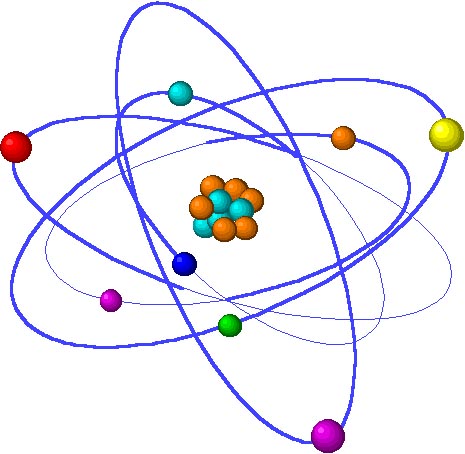Properties of elementary particles with electric charge
By rubbing two different bodies together, as well as by induction, the bodies can be given special properties — electrical.
Electric charges and charged particles
Learning electrified bodies showed that their electrical properties are explained by the fact that the particles of which all substances are composed have a special physical property called electric charge.
Electric charge characterizes the relationship of particles with their own electromagnetic field and their interaction with an external electromagnetic field. Charge is one of the distinguishing properties of many elementary particles. There are two types of electric charges: positive and negative.
As you know, all bodies in nature are composed of discrete particles. These particles are called elementary. Each elementary particle has its own characteristics that are different from the characteristics of other particles. These characteristics include: rest mass, electric charge, spin, magnetic moment, lifetime, etc.
Elementary particles are part of the atoms and molecules of matter, but they can also be in a free state. These are, for example, the electrons that make up the "electron gas" in metal wires, the electrons of cathode currents in vacuum tubes etc.
Elementary particles with electric charges of different signs attract and with charges of the same signs repel each other. When the particles move around them, a magnetic field is observed.

The main charge carriers in matter, that is, particles that have electrical properties, are negatively charged electrons and positively charged protons. They are part of the atoms of all substances, being their main structural elements.
The totality of all electrical phenomena is determined by the charges of the particles that make up the atoms and their fields. In this connection let us dwell on the internal structure of atoms in so far as it is necessary to understand the phenomena considered in electrical engineering.
The structure of atoms of chemical elements: The structure of atoms — elementary particles of matter, electrons, protons, neutrons
Electrical properties of bodies
Solids usually have a crystalline structure: their atoms are arranged in space in a strict sequence at a certain distance from each other, forming the so-called spatial or crystal lattice. Lattice sites contain positive ions.
Because of the relatively small distances, neighboring atoms act on the electrons of the valence shell of a given atom, which is why the valence electrons participate directly in the electron exchange of each atom with the surrounding neighboring atoms.This leads to the fact that the energy levels are divided into several closely spaced levels that form zones of continuous electron energy states.
The electrical properties of bodies are determined by the structure of these zones and the number of electrons filling the zones in accordance with the exclusion principle. In metals that include, for example, copper, the valence band is half filled with electrons, while all the lower energy bands are completely filled.
The presence of a partially filled zone is characteristic of all metals. To excite the valence electron of an isolated atom to a higher level, certain discrete parts of energy are required.
In metals, the conduction band is partially filled. Therefore, the electrons in it easily occupy free states, and practically any small amount of energy is sufficient to raise an electron to a higher free level and create electricity.
Since conductivity in metals is due to the mobility of electrons, it is called electronic conductivity… The conductivity of electrolytes is determined by the presence of easily mobile positive and negative ions in solutions in which some of the solute molecules are decomposed. This conductivity is called ionic conductivity.
Significant ionic conductivity is characteristic of some salts in the molten state and gases in the ionized state... Gases are ionized under the influence of high temperature, high voltage, etc. A gas with a high density of free electrons and molecules in an ionized state is called plasma.
See also: Metals and Dielectrics - What's the Difference?
Coulomb's law
Coulomb's law (1785) was the first to establish a quantitative relationship between the values of electric charges and their interaction. This law has played and continues to play an important role in establishing the unit of charge and force characteristics of the electrostatic field. For more details see here:Coulomb's law and its application in electrical engineering


